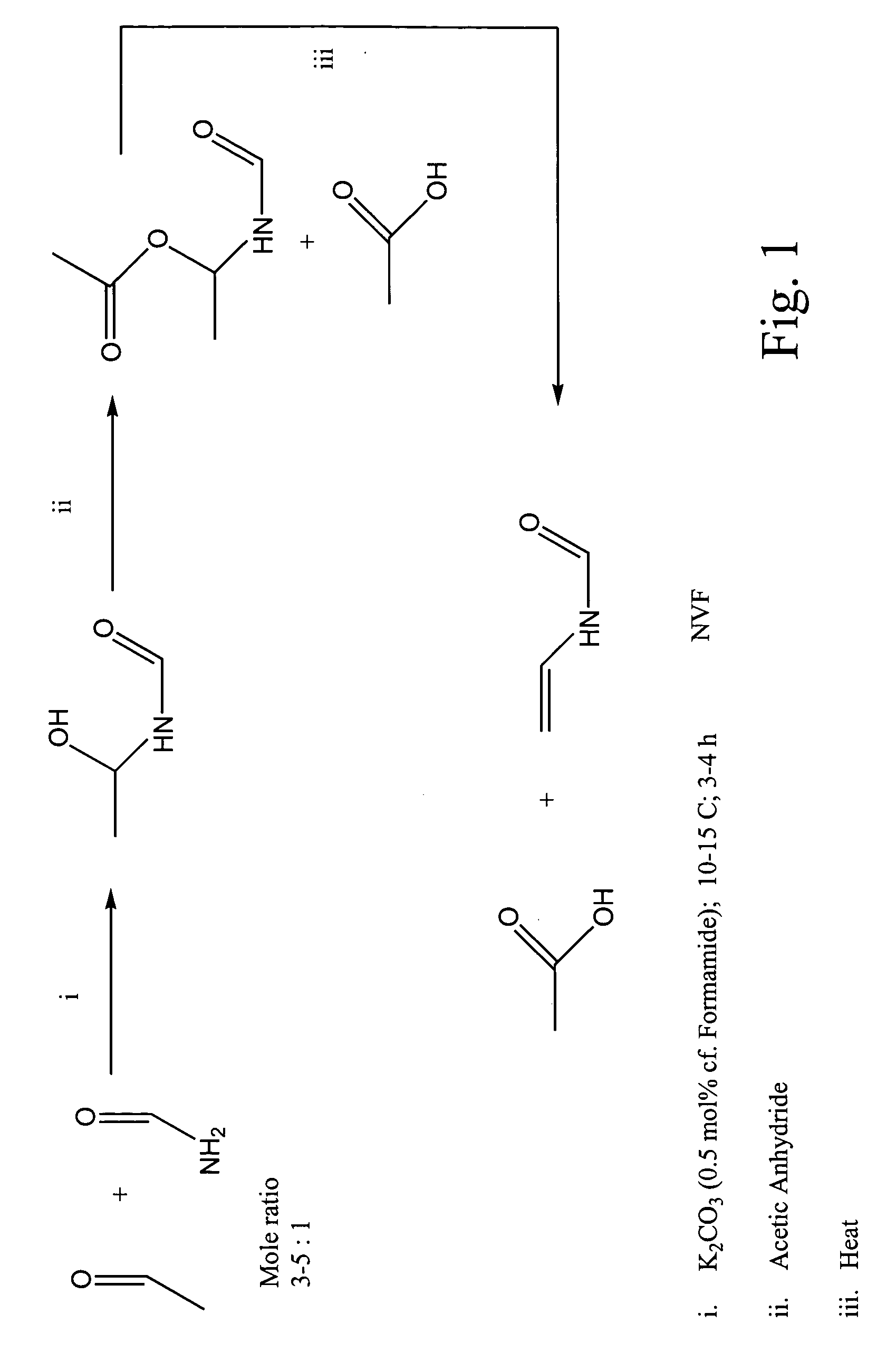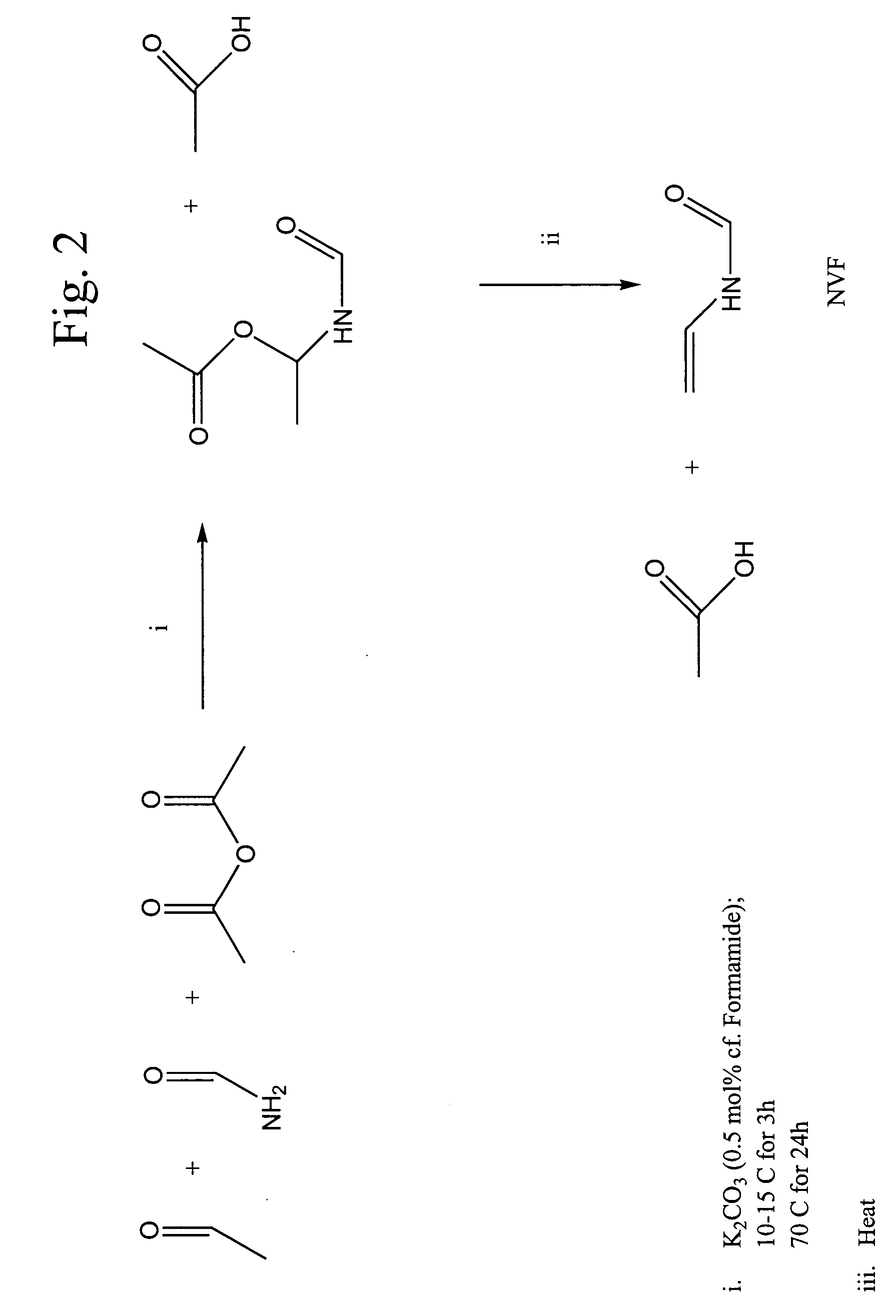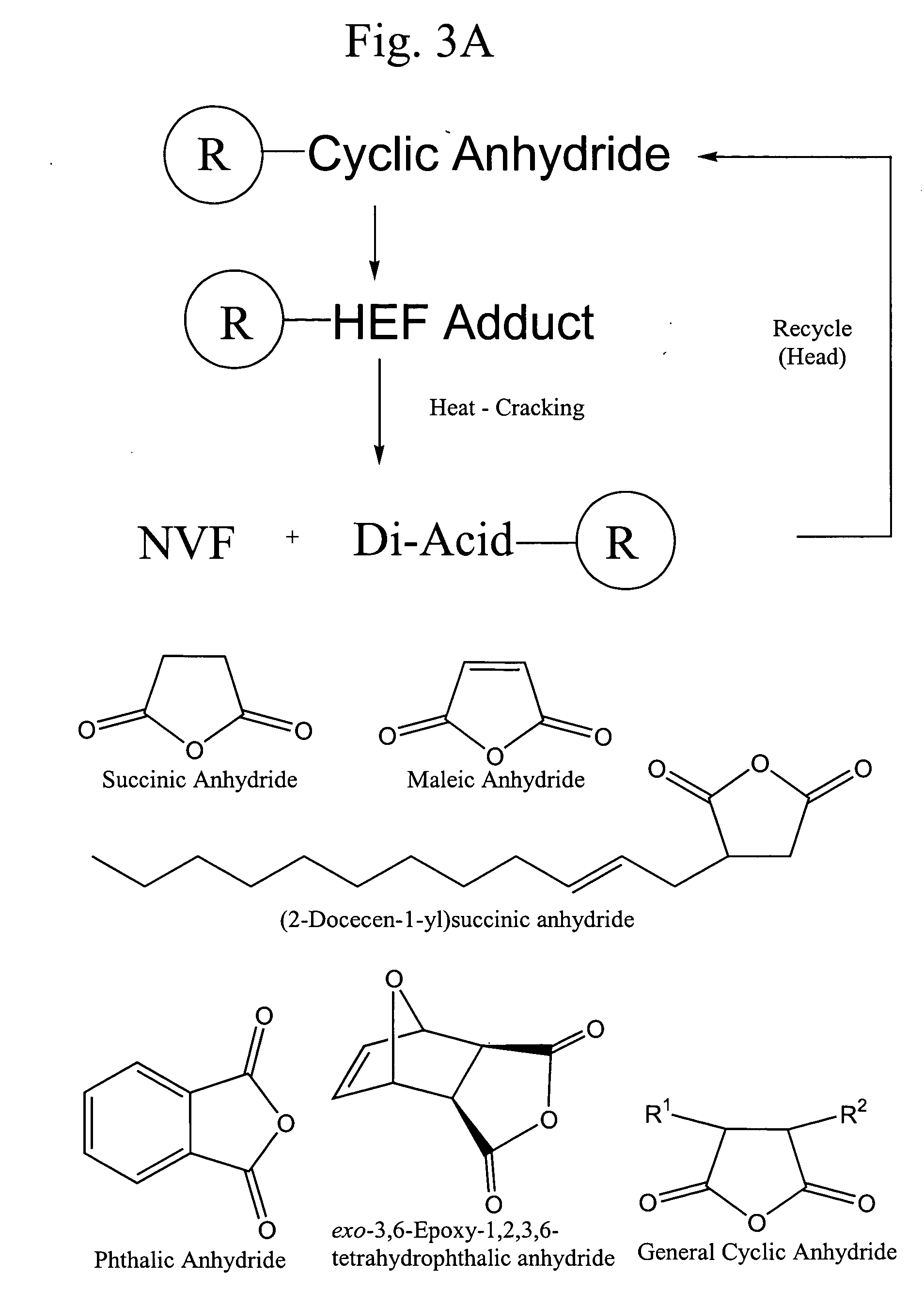Synthesis of N-vinyl formamide
a technology of n-vinylformamide and n-vinylformamide, which is applied in the preparation of carboxylic acid amides, other chemical processes, organic chemistry, etc., can solve the problems of nvf material synthesized by this method, exhibited lower than desired purity, and most likely restricted process, so as to prevent the loss of relatively volatile acetaldehyde
- Summary
- Abstract
- Description
- Claims
- Application Information
AI Technical Summary
Benefits of technology
Problems solved by technology
Method used
Image
Examples
experimental examples
In the studies of the present invention, some of the quantities were varied between experiments but the quantities set forth in the examples below are representative values and scales. No attempt was made to optimize any of the reactions studied.
example 1
Synthesis of HEF
The first step in the two-step or sequential reaction of the present invention is the synthesis of HEF. Typically, 0.35 ml triethylamine (0.0025 mol), 10 ml formamide (0.25 mol) and 20 ml isooctane were placed in a flask fitted with a cold-finger condenser. Acetaldehyde was slowly added to the formamide layer (lower) over several hours (˜4 h) until a white suspension (HEF) was formed. The HEF was then collected by filtration and washed with isooctane. This reaction is an equilibrium reaction and care was taken with the HEF to avoid decomposition back to formamide and acetaldehyde. Generally, the HEF was used in further reactions the same day it was synthesized.
example 2
Reaction of HEF with Succinic Anhydride
4.59 g succinic anhydride (0.046 mol) in 100 ml ethyl acetate was added to 4 g HEF (0.045 mol) in 100 ml ethyl acetate containing 5 mg Amberlyst 15 acid catalyst. The solution was stirred at 50° C. for 24 h before filtering out the catalyst and removing the solvent under vacuum to yield a white solid. The product was washed with dichloromethane and dried in air. NMR analysis showed the presence of a carboxylic acid proton (12.1 ppm), which indicates ring opening of the anhydride.
PUM
| Property | Measurement | Unit |
|---|---|---|
| temperature | aaaaa | aaaaa |
| temperature | aaaaa | aaaaa |
| temperature | aaaaa | aaaaa |
Abstract
Description
Claims
Application Information
 Login to view more
Login to view more - R&D Engineer
- R&D Manager
- IP Professional
- Industry Leading Data Capabilities
- Powerful AI technology
- Patent DNA Extraction
Browse by: Latest US Patents, China's latest patents, Technical Efficacy Thesaurus, Application Domain, Technology Topic.
© 2024 PatSnap. All rights reserved.Legal|Privacy policy|Modern Slavery Act Transparency Statement|Sitemap



